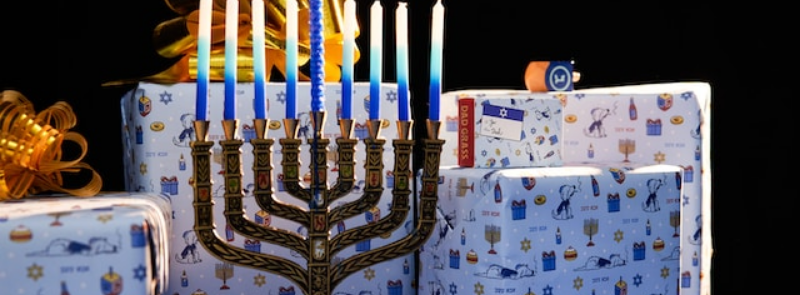
When It Occurs
Annually 25th Day of Kislev
Timeline
Days Passed (753)
# Hashtags
#Hanukkah #FestivalOfLights
Hanukkah, a Jewish holiday, commemorates the rededication of the Second Temple of Jerusalem, with the word "Hanukkah" meaning "dedication" in Hebrew.
Referred to as the "Festival of Lights," Hanukkah spans eight days. Each night, Jews light an additional candle on a multibranched candelabra known as a menorah. While Hanukkah typically occurs in December, there are instances when it may commence in November.
Historical Background
-
Maccabean Revolt: Hanukkah commemorates the victory of the Maccabees, a Jewish rebel army, over the Seleucid Empire, which had outlawed Jewish religious practices and desecrated the Second Temple in Jerusalem.
-
Rededication of the Temple: After the Maccabees liberated Jerusalem and the Temple Mount, they cleansed and rededicated the Second Temple. According to tradition, a miracle occurred when they lit the menorah (candelabrum) inside the temple, which had enough oil to burn for only one day, but miraculously lasted for eight days until new oil could be prepared.
Traditions and Customs
-
Menorah Lighting: The central ritual of Hanukkah is the lighting of the menorah, a nine-branched candelabrum. One candle (or oil lamp) is lit on each night of Hanukkah, progressing to eight candles plus a ninth called the shamash (helper or servant candle) used to light the others.
-
Recitation of Blessings: Before lighting the menorah, blessings (brachot) are recited, thanking God for the commandment to light the Hanukkah candles and for miracles performed for the Jewish people in ancient times.
-
Playing Dreidel: Dreidel is a four-sided spinning top with Hebrew letters on each side, standing for the phrase "A great miracle happened there" (in Israel, "here"). Players spin the dreidel and follow instructions based on which letter lands face up, usually involving a pot of coins or candy.
-
Foods and Treats: Traditional foods associated with Hanukkah include latkes (potato pancakes fried in oil) and sufganiyot (jelly-filled doughnuts), both fried in oil to commemorate the miracle of the oil lasting eight days.
-
Gift Giving: Giving gifts, especially to children, has become a modern Hanukkah tradition, though it is not a traditional religious practice.
Observance and Celebration
-
Family Gatherings: Hanukkah is a time for families and communities to come together, light the menorah, sing songs (such as Ma'oz Tzur), exchange gifts, and enjoy festive meals.
-
Public Menorahs: In many cities around the world, public menorah lightings are organized, often with community celebrations, music, and activities to share the holiday spirit with all.
-
Educational Emphasis: Hanukkah also carries educational significance, teaching Jewish history, religious freedom, and the importance of maintaining cultural identity.
Cultural and Spiritual Significance
-
Symbolism of Light: Hanukkah symbolizes the triumph of light over darkness, freedom over oppression, and spirituality over assimilation.
-
Unity and Hope: The holiday reinforces themes of unity among the Jewish people and hope for a brighter future, celebrating resilience and faith.
Conclusion
Hanukkah is a joyous and festive holiday that holds deep religious and cultural significance for Jews worldwide. It celebrates historical events of liberation and religious freedom, emphasizing themes of light, hope, and perseverance. Through rituals, traditions, and community gatherings, Hanukkah continues to be a cherished time for reflection, celebration, and sharing the richness of Jewish heritage with others.


